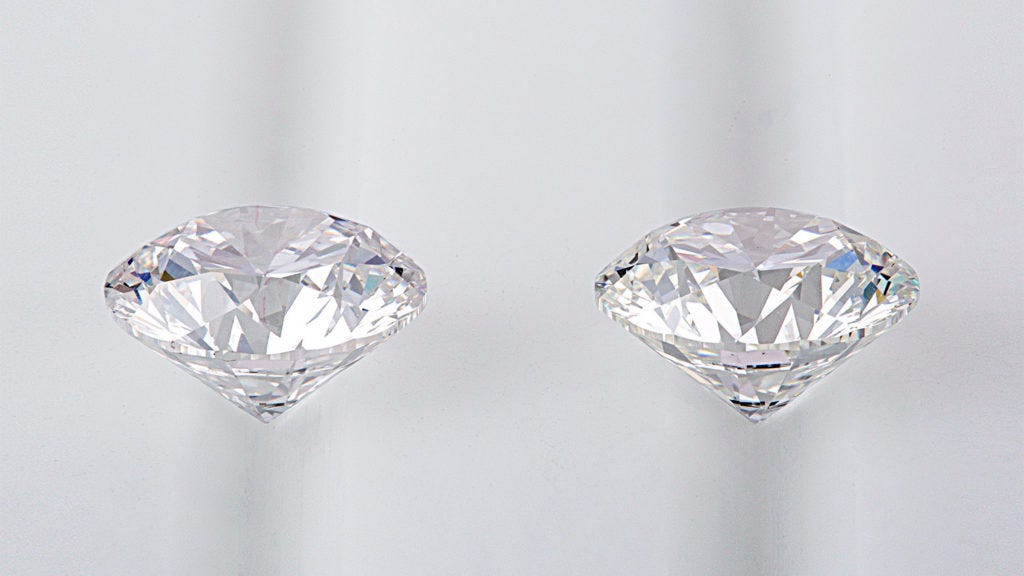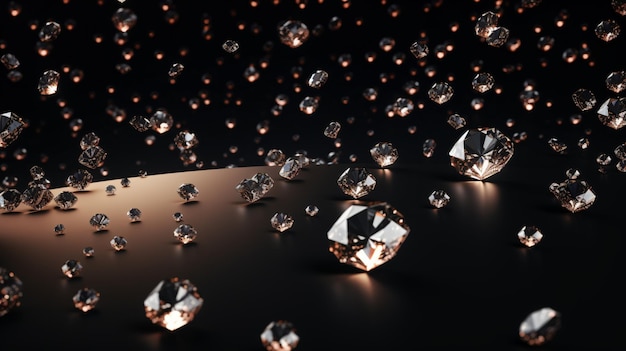Diamonds have long been revered for their timeless beauty and enduring symbolism. However, advancements in technology have given rise to an alternative: lab-grown diamonds. In this article, we’ll delve into the world of diamonds, comparing lab-grown gems with their natural counterparts to help you make an informed choice for your next sparkling purchase.
Introduction
Diamonds have captured the human imagination for centuries, symbolizing love, eternity, and luxury. Traditionally, diamonds were exclusively mined from the Earth’s crust, but recent innovations have paved the way for lab grown diamonds vs real, offering a sustainable and ethical alternative. Let’s explore the nuances of lab-grown diamonds versus natural diamonds and uncover which option suits you best.
What are Lab-Grown Diamonds?
Lab-grown diamonds, also known as synthetic or cultured diamonds, are created in controlled laboratory environments that mimic the natural conditions in which diamonds form beneath the Earth’s surface. Using advanced technology, scientists replicate the crystallization process, resulting in diamonds that are chemically and physically identical to natural ones.
The Science Behind Lab-Grown Diamonds
In laboratories, carbon atoms are arranged in a crystal lattice structure under high pressure and temperature, mirroring the natural diamond formation process. This precision-controlled environment allows for the creation of flawless diamonds with remarkable clarity and brilliance.
Advantages of Lab-Grown Diamonds
Lab-grown diamonds offer several distinct advantages over their natural counterparts, making them an attractive choice for conscientious consumers.
1. Environmental Impact
Unlike traditional diamond mining, which involves significant land disruption and environmental degradation, lab-grown diamonds have a minimal ecological footprint. By opting for lab-grown diamonds, you can enjoy the beauty of diamonds without contributing to environmental harm.
2. Ethical Considerations
One of the most compelling reasons to choose lab-grown diamonds is their ethical sourcing. Traditional diamond mining has been plagued by issues such as child labor, worker exploitation, and environmental damage. In contrast, lab-grown diamonds are ethically produced, free from the social and humanitarian concerns associated with mined diamonds.
Environmental Impact
The environmental impact of diamond mining is a significant concern. Traditional diamond mining operations often result in deforestation, habitat destruction, and water pollution. In contrast, lab-grown diamonds have a minimal ecological footprint. By choosing lab-grown diamonds, consumers can reduce their environmental impact and contribute to a more sustainable future.
Quality and Purity
When it comes to quality and purity, both lab grown diamonds and natural diamonds exhibit exceptional characteristics. However, there are some differences to consider.
1. Quality Control
Lab grown diamonds undergo rigorous quality control measures throughout the production process, ensuring consistent quality and purity. In contrast, natural diamonds may vary in quality depending on factors such as mining location and geological conditions.
2. Purity
Lab-grown diamonds are often free from impurities and inclusions commonly found in natural diamonds. This results in diamonds with exceptional clarity and brilliance, making them highly desirable for jewelry purposes.
Cost Comparison
Cost is a significant factor for many diamond shoppers. Let’s compare the cost factors associated with lab-grown and natural diamonds.
1. Price
Lab-grown diamonds typically cost 20-40% less than natural diamonds of comparable quality. This price difference can make lab-grown diamonds a more budget-friendly option for consumers without compromising on quality or beauty.
2. Value Retention
While natural diamonds may hold their value over time, lab-grown diamonds may experience depreciation due to their manufactured nature. However, the lower initial cost of lab-grown diamonds can offset this potential depreciation for some buyers.
Social and Ethical Aspects
The ethical considerations of diamond mining are a growing concern for consumers. From environmental degradation to human rights abuses, traditional diamond mining practices have come under scrutiny in recent years.
Market Trends
In recent years, there has been a notable shift in consumer preferences towards lab-grown diamonds. As awareness of ethical and environmental issues grows, more consumers are opting for sustainably sourced alternatives to traditional diamonds.
Perception and Acceptance
Consumer perception plays a significant role in the acceptance of lab-grown diamonds. While some buyers may still prefer the allure of natural diamonds, others are embracing the ethical and sustainable aspects of lab-grown diamonds.
Certification and Standards
When purchasing diamonds, certification is essential to ensure authenticity and quality. Both lab-grown and natural diamonds are subject to certification standards established by reputable organizations such as the Gemological Institute of America (GIA).
Durability and Longevity
Diamonds are prized for their durability and longevity, symbolizing enduring love and commitment. Both lab-grown and natural diamonds exhibit similar durability characteristics, making them suitable for everyday wear and cherished heirlooms.
Fashion and Trends
In the world of fashion, lab-grown diamonds are making a splash as eco-conscious consumers seek sustainable alternatives to traditional luxury goods. Designers and jewelers are increasingly incorporating lab-grown diamonds into their collections, reflecting shifting consumer preferences.
Personal Preferences
Ultimately, the choice between lab-grown and natural diamonds boils down to personal preferences and priorities. Some buyers may prioritize ethical sourcing and environmental sustainability, while others may place greater value on tradition and rarity.
Conclusion
In conclusion, the debate between lab-grown and natural diamonds is multifaceted, encompassing ethical, environmental, and economic considerations. While both types of diamonds possess unique qualities and allure, lab-grown diamonds offer a sustainable and ethical alternative for conscientious consumers. Whether you’re drawn to the timeless beauty of natural diamonds or the eco-friendly appeal of lab-grown gems, the choice is yours to make.





